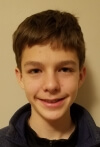OUSA Junior National Coach Job Search – CLOSED
NOTE: This position is now closed. The following information is for archival reference purposes only.
Orienteering USA (OUSA) seeks a Junior National Coach for its National Junior Program (NJP). The program is led and administered by the Junior Team Executive Steering Committee (JTESC).
General job description
The overarching objectives of the Junior National Coach role are to provide quality coaching and programs for young athletes, and to develop stronger young athletes, committed to orienteering and to forming a strong community of supportive team members.The Junior National Coach will work directly with the athletes in the NJP, as well as with the JTESC pool of coaches and mentors, in order to reach these objectives.
Responsibilities
Assist with review of athlete applications:
- Work with JTESC in reviewing the NJP Information and application prior to publication for the next program year. *
- Review submitted applications from athletes regarding performance targets and make recommendations to JTESC about athlete placement. *
Athlete Follow-up:
- Review athletes’ training plans for the coming season *
- Assist athletes new to the program in creating and following their training plan
- Provide feedback
- Work with all NJP athletes to identify a local coach either from their home club or from the national pool of coaches and mentors.
- Monitor JNT athletes’ training logs on Attackpoint (AP) and help them find an “AP-mentor,” if necessary
- Coordinate and distribute exercises from the Training Subscription Service to the athletes and their local coaches
- Oversee course reviews and/or camps at National Ranking Events and major other camps, either personally or by working with others
- Attend monthly team conference calls, helping to create better team cohesion and responding to members’ questions
JWOC
- Lead the JWOC Selection Committee, the petition process, and the JWOC team announcement
- Set up training calls for the JWOC team and alternates
- Either travel to JWOC (including the on-location pre-JWOC training) as lead coach or coordinate alternate coaches or mentors to ensure best possible support to the athletes as individuals and as a team
- work with JTESC to ensure all organizational requirements are met. Remuneration for the pre-JWOC training and JWOC attendance as coach is in addition to the basic compensation
NAOC
- Either travel to NAOC as the Junior National Coach, or work with alternate coaches or mentors in order to provide the best support to the athletes as individuals and as a team
- Work on identifying the best team composition
- Work with JTESC to ensure all organizational requirements are met. Remuneration for NAOC attendance as coach is in addition to the basic compensation.
OUSA/JTESC
Participate as a contributing member of JTESC to the continued growth and improvement of OUSA’s National Junior Program.
* These three tasks have already been completed by outgoing coaches for the start of 2020.
Requirements
- Have a SafeSport-Trained certificate
- Coaching experience (experience with athletes between the ages of 13-20 preferred)
- The successful applicant is expected to use their own computer, cell phone, internet connection, driver’s license, etc., to fulfill the duties of this role.
Desired skills/qualifications
- Demonstrated high level technical knowledge of orienteering principles
- Strong orienteering/map reading skills
- Capable of using mapping and/or course-design software to produce training exercises
- Experienced with athletic competitions abroad
- Good communication and interpersonal skills
- Capable of designing training plans to support physical, technical, and psychological development
- Capable of tailoring athlete goals and plans to meet individual strengths and needs
- Demonstrated ability to build a sense of team unity and good sportsmanship
- Patience and understanding
Remuneration
$5,000.00 February through September 2020.
Expect approximately 40 hours per month, but keep in mind that the workload varies.
Applying for this position
Please send a letter expressing your interest and your background in orienteering and a short résumé of your experience in elite orienteering and coaching to the OUSA Junior Program.

